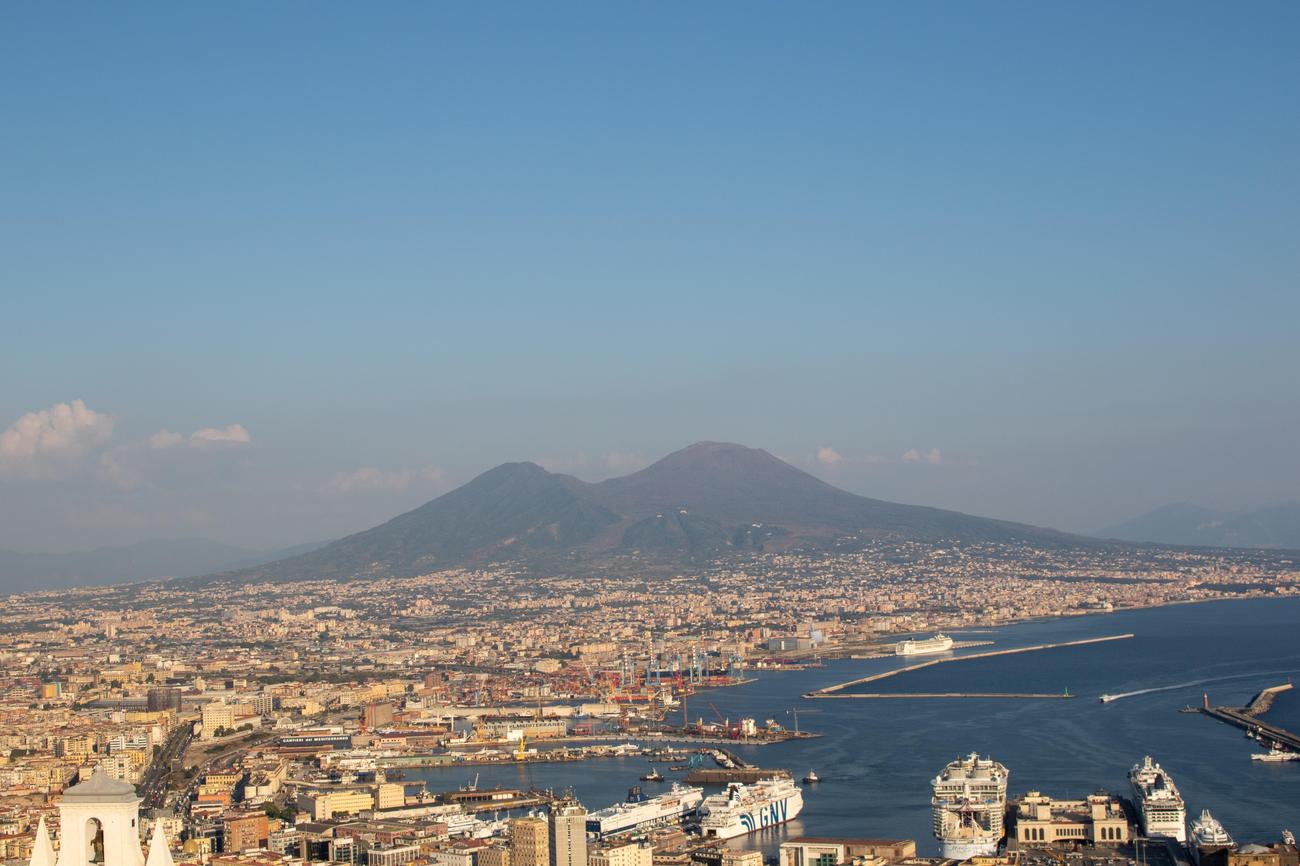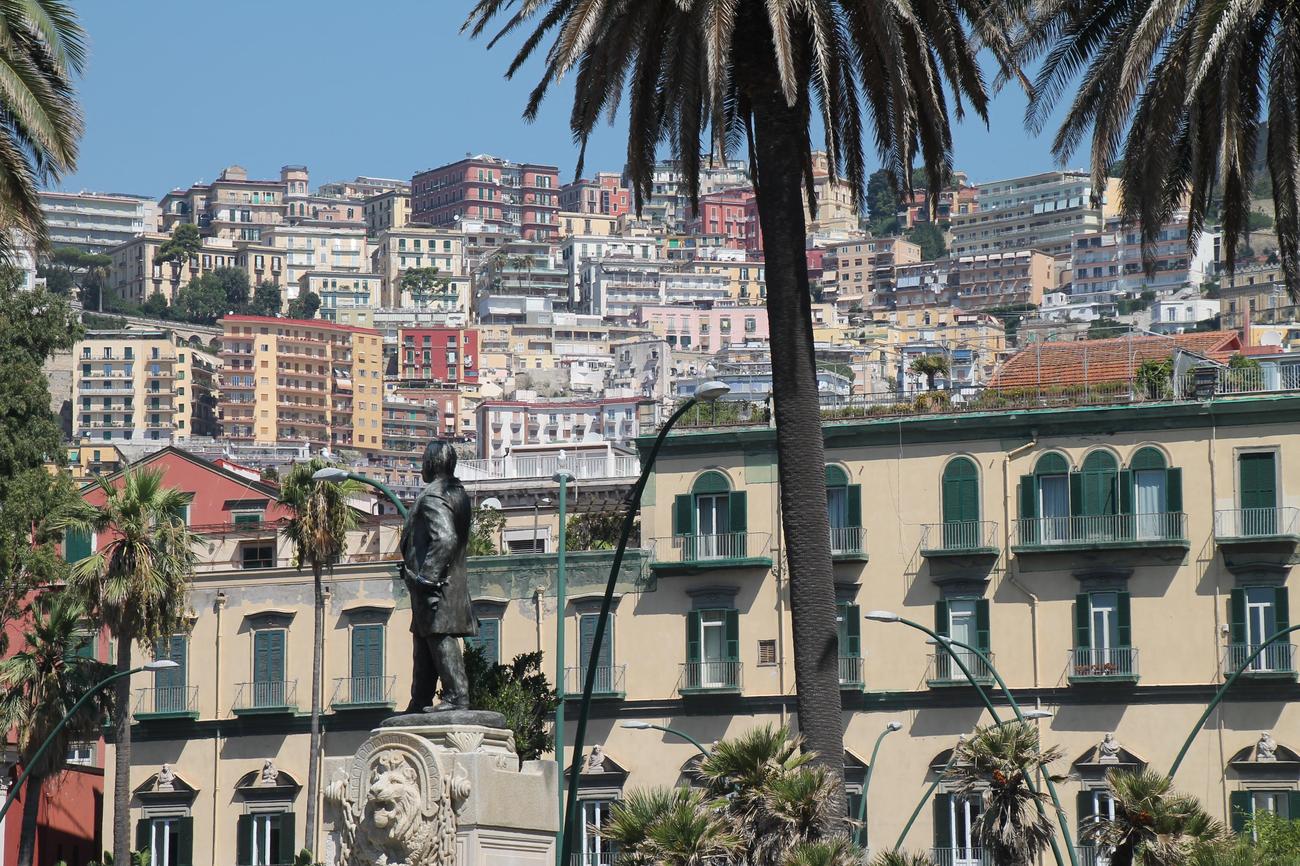Step into the captivating world of ancient civilizations as we embark on a quest to unravel the mysterious origins of one of Italy’s most enchanting cities. Welcome to “The Ancient Name Unveiled: Discovering What Naples Was Originally Called.” As a seasoned history enthusiast with a passion for delving into the past, we will embark on a thrilling journey through historical records, manuscripts, and archaeological findings to uncover the long-lost identity of Naples. Join me as we peel back the layers of time and reveal the ancient name that has remained hidden for centuries.

What was Naples originally called?
Naples, a city steeped in history and culture, holds many secrets from its ancient past. If we were to peel back the layers of time, we would discover that Naples was not always known by its current name. In fact, this vibrant city on the coast of Italy was originally called Neapolis.
Neapolis: The Birth of a City
In the year 600 BCE, a settlement was founded close to the ancient city of Palaepolis. This new city was named Neapolis, which in Greek translates to “new city.” Neapolis quickly grew in importance and became a key player in the region of Magna Graecia. It was a bustling center of trade and commerce, attracting people from far and wide.
A Tale of Sirens and Civilization
The story behind the original name of Naples takes us even further back in time. Palaepolis, the ancient city near which Neapolis was founded, had already taken on the name of the siren Parthenope. Legend has it that Parthenope, one of the mythical sirens who enchanted sailors with their songs, washed ashore and met her untimely end in that very spot. To honor her memory, the city was named after her.
Neapolis in the Roman Era
As the years passed, Neapolis continued to flourish, taking on a prominent role in Roman society. The city’s strategic location allowed it to benefit from the extensive Roman trade network, solidifying its status as a bustling economic and cultural hub. Neapolis became known for its impressive architecture, art, and intellectual discourse. It was a place where great minds gathered and ideas flourished.
Quote: “Neapolis, with its rich history and diverse influences, became a city of great significance in the ancient world.”
Transformation and Reinvention
Over time, the city of Neapolis experienced transformations and changes, as empires rose and fell. In the 7th century, it became the capital of the Duchy of Naples and later the Kingdom of Sicily and Kingdom of Naples. These shifts in power and governance shaped the city’s identity and influenced its art and architecture.
A Beacon of Culture
Naples continued to be a center of culture during the Renaissance and Enlightenment periods. The city attracted artists, writers, philosophers, and scientists who sought inspiration in its captivating surroundings. From Caravaggio’s masterpieces to the groundbreaking scientific discoveries of Giambattista Vico, Naples was a breeding ground for creativity and intellect.
A Role in Italian Unification
Naples played a significant role in the early push towards Italian unification. The city became a symbol of resistance against foreign domination and fought for its autonomy. The people of Naples, fueled by their passion for freedom, actively participated in the process that eventually led to the formation of the Italian Republic.
Naples Today: A Citadel of History
Today, Naples stands as one of the largest municipalities in Italy, with its rich history woven into its vibrant streets and colorful buildings. The ancient name of Neapolis may have been replaced by modern-day Naples, but the echoes of its past still resound through the city, telling the tales of its fascinating journey through time.
As we explore the ancient origins of Naples, we uncover a story that encompasses legends, empires, and a diverse array of cultures. The original name of Neapolis reflects the city’s spirit of reinvention and resilience, making Naples not just a captivating destination for tourists, but also an enduring symbol of the human experience.
Quote: “Naples, a city with a storied past, continues to captivate the hearts and minds of those who dare to explore its ancient origins.”
Naples, Italy is a city with a rich history and vibrant culture. If you’re looking for fun facts about Naples Italy, look no further! Did you know that Naples is home to the oldest opera house in the world, Teatro di San Carlo? It opened in 1737 and continues to host world-class performances to this day. Another interesting fact is that Naples is famous for its pizza, with the traditional Neapolitan pizza even being protected by UNESCO as a cultural heritage. So, if you’re a pizza lover, Naples is definitely the place to visit! Discover more fascinating facts about this enchanting city by clicking here: fun facts about Naples Italy.
The Birthplace of Pizza: Naples
[youtube v=”FBbBWifAdCg”]
Naples, also known as Neapolis in Greek, holds a significant place in history as the birthplace of pizza. It is a city steeped in tradition and excellence when it comes to this iconic dish. As an expert SEO content writer with fluency in English, I am here to delve deeper into the rich pizza culture of Naples and share the highlights of my journey through the city.
Upon arriving in Naples, I was overwhelmed with excitement. As a pizza enthusiast, this was the most thrilling place for me to be. Neapolitan pizza, especially the Margherita, is considered the most iconic pizza of all time. The simplicity of the pizza here is what sets it apart, but the way it is made and enjoyed follows strict guidelines.
My first stop on this pizza pilgrimage was to meet Antonio Pache, the gatekeeper of Neapolitan pizza. In 1984, he founded the Associazione Verace Pizza Napoletana, an organization dedicated to protecting the tradition and authenticity of Neapolitan pizza worldwide. We met at his pizzeria, Shiro A Santa Brigada, where he explained what it means to be a true Neapolitan pizza. The cheese and tomatoes used in the pizza must come from specific sources in Naples, ensuring the highest quality and authenticity.
Next, I visited Atilio, a family-owned pizzeria that has been serving pizza since 1938. Atilio Pachetti, along with his son Mario, showed me the art of making two classic Neapolitan pizzas – the Margherita and the Marinara. I was surprised to see Atilio sprinkle black pepper on the pizza, which is a controversial move in Naples where rules are taken seriously. The pizzas were delicious, and Atilio’s skill and expertise were evident with every bite.
Enzo Coccia, a third-generation pizzaiolo, prides himself on the tradition and science behind Neapolitan pizza. We made pizza together at Capo de Monte, one of the historical places in Naples. This location holds significance as it is where the first Margherita pizza was prepared for Queen Margherita of Savoy. Enzo shared the story of how the Margherita pizza got its name, with the red tomatoes, green basil, and white cheese representing the colors of the Italian flag.
I also had the opportunity to explore the region of Campania, where all the pizza ingredients originate from. From the tomatoes grown near Mount Vesuvius to the cheese makers in Caserta, everything on a Neapolitan pizza is locally produced. I visited a water buffalo farm in Caserta, where the milk for buffalo mozzarella cheese is produced. The cheese-making process was fascinating, and the taste of the freshly made mozzarella was unparalleled.
Additionally, I had the privilege of visiting the famous Stefano and Simone Ferrara, who are known for their Neapolitan ovens. These ovens, handmade in Naples, are considered the kings of Neapolitan ovens. The craftsmanship and attention to detail in these ovens were truly remarkable.
Throughout my journey, I met passionate individuals like Gino Sorbillo, who showed me that pizza can be both a food for the people and a highly respected cuisine. Gino has built an empire around his love for Neapolitan pizza, with numerous pizzerias, a pizza fritta shop, and even a personal pizza museum called the House of Pizza.
One of the most memorable moments was visiting Franco Pepe’s pizzeria, Pepe in Grani, located just outside of Naples. Franco transformed his hometown of Caiazzo into a thriving pizza destination. His dedication to perfecting the dough and toppings resulted in an incredible dining experience. His pizzeria, with its beautiful design and breathtaking views, truly felt like a dream come true.
As my trip to Naples comes to a close, I am filled with a sense of awe and admiration for the pizza culture that thrives in this city. The passion, pride, and craftsmanship of Neapolitan pizzaiolos are unparalleled. Naples has undoubtedly earned its title as the birthplace of pizza, and experiencing it firsthand was a truly fulfilling journey.
In conclusion, Naples is more than just a city with historic significance. It is a city that holds the essence and soul of pizza. From the strict guidelines that govern its creation to the passion and dedication of the pizzaiolos, Naples truly is a pizza lover’s paradise. I feel privileged to have experienced the rich tradition and excellence of Neapolitan pizza, and I hope that my experience has conveyed the magic and allure of this culinary masterpiece.

FAQ
Question: What was Naples originally called?
Answer: Naples was originally called Neapolis, which means “New City” in Greek. It was founded as Neapolis in 600 BCE, close to the ancient city of Palaepolis.
Question: What is the significance of Palaepolis in relation to Naples?
Answer: Palaepolis is an ancient city located near Naples. Palaepolis had absorbed the name of the siren Parthenope. Its presence in close proximity to Naples influenced the naming and historical development of the city.
Question: What role did Neapolis play in Magna Graecia?
Answer: Neapolis played an important role in Magna Graecia, which was a group of Greek colonies established in Southern Italy. As a prominent city, Neapolis contributed to the cultural and economic development of the region.
Question: How did Naples evolve during the Roman period?
Answer: Neapolis was refounded as Neapolis in the 6th century BC and held a prominent position in Roman society. It became a significant center of trade, art, and architecture, showcasing the influence of Roman civilization in the region.
Question: What is the historical significance of Naples beyond ancient times?
Answer: Naples has a rich history influenced by various civilizations and cultures. It became the capital of the Duchy of Naples in the 7th century and later the Kingdom of Sicily and Kingdom of Naples. The city has witnessed the rise and fall of several empires, leaving traces of diverse art and architectural styles. It also played a role in the early push towards Italian unification and continues to be one of the largest municipalities in Italy today.
- Unlock Water’s Symbolism: A Cross-Cultural Exploration - April 20, 2025
- Identify Black and White Snakes: Venomous or Harmless? - April 20, 2025
- Unlocking Potential: Origins High School’s NYC Story - April 20, 2025















